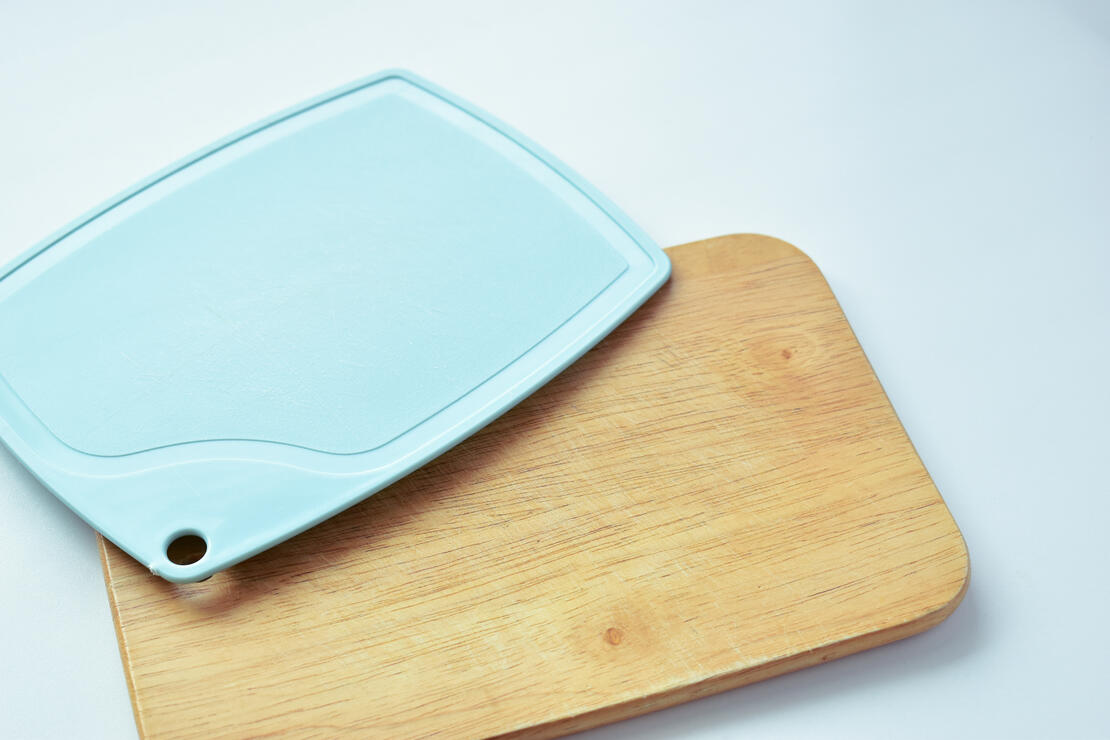Wood vs. Plastic Cutting Boards: Which One Should You Choose?

The debate between wood and plastic cutting boards has been simmering for years, and with Food Safety Education Month upon us, it’s the perfect time to revisit the question. Is wood truly better for your knives, or is plastic more hygienic? Does one require more upkeep? Let’s break down the pros and cons of each, so you can confidently pick the best fit for your kitchen.
Wood Cutting Boards
Maintenance: Wood cutting boards require a bit more TLC compared to their plastic counterparts, but with proper upkeep, they can be both durable and hygienic. To keep them in top shape, it’s important to follow these key steps:
- Hand Wash Only: Wooden boards should be washed by hand using warm, soapy water. It’s crucial to dry them immediately after washing to prevent the wood from absorbing too much water, which can cause warping or cracking.
- Oil Regularly: To maintain the integrity and longevity of your wooden cutting board, regular oiling is essential. Use food-grade mineral oil or a specialized cutting board conditioner to keep the wood from drying out and to create a barrier against moisture.
- Avoid High Heat: Never put your wooden cutting board in the dishwasher or expose it to high heat. The intense heat and prolonged exposure to water can damage the wood, leading to splits or a rough surface.
- Disinfect with Vinegar: Wooden boards can be sanitized using a solution of white vinegar and water. This natural disinfectant helps to kill bacteria without the need for harsh chemicals.
- Separate Boards for Raw Meat and Produce: While wood has natural antimicrobial properties, it’s still wise to use separate boards for raw meat and fresh produce to minimize cross-contamination.
Pros:
- Aesthetically pleasing and highly durable.
- Gentle on knives, reducing the need for frequent sharpening.
- Natural antimicrobial properties add an extra layer of safety.
Cons:
- Requires regular maintenance and care.
- Can warp or crack if not properly cared for.
- Typically more expensive than plastic options.
Plastic Cutting Boards
Maintenance: Plastic cutting boards are generally easier to maintain and ideal for those who prioritize convenience. Here’s how to care for them:
- Dishwasher-Safe: One of the biggest advantages of plastic cutting boards is that they are dishwasher-safe. The high heat in the dishwasher effectively kills bacteria, making plastic a more hygienic option for those concerned with sanitation.
- Replace When Worn Out: Plastic cutting boards are prone to developing deep grooves and cuts over time. Once these grooves become too deep, it’s time to replace the board, as they can harbor bacteria even after thorough cleaning.
- Avoid High Heat: Like wood, plastic cutting boards should not be exposed to high heat. While they are dishwasher-safe, avoid placing them in the oven or near direct heat sources, as they can melt or warp.
- Sanitize Regularly: In addition to regular washing, it’s a good practice to sanitize plastic cutting boards after preparing raw meat. A bleach solution or a mixture of vinegar and water works well for this purpose.
Pros:
- Easier to clean and maintain, with the convenience of being dishwasher-safe.
- Often more affordable and available in various colors and sizes.
- Lightweight and less prone to damage from moisture.
Cons:
- Can develop deep grooves over time, which may harbor bacteria.
- Less gentle on knives compared to wood.
- Can warp or melt if exposed to high heat.
The Bottom Line
When it comes to choosing between wood and plastic cutting boards, your decision will depend on your priorities. If you value a board that's gentle on your knives and looks great on your counter, wood might be the way to go—just be ready for the extra maintenance. If ease of cleaning and affordability are more important, a plastic board may be better for you, as long as you replace it when it starts to show wear.
Regardless of which board you choose, proper cleaning and regular maintenance are key to ensuring your cutting board remains a safe and effective tool in your kitchen.
Looking to upgrade your kitchen tools? Check out the LifeBridge Health Marketplace powered by Vale Health, where you can find kitchen essentials recommended by healthcare providers, designed to help you keep your relationship with food safe and healthy!